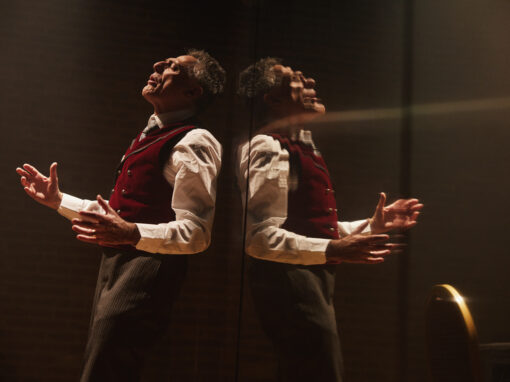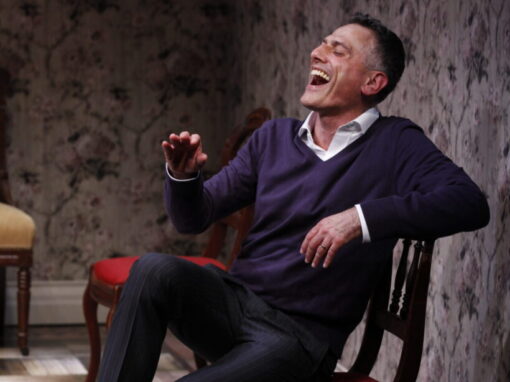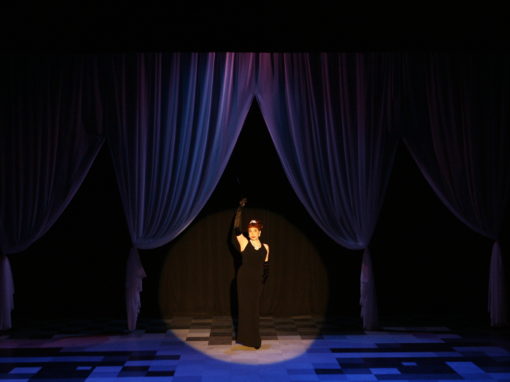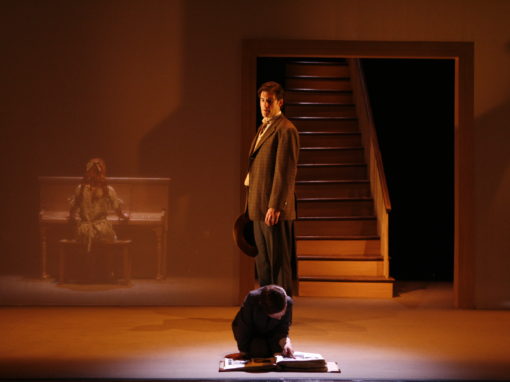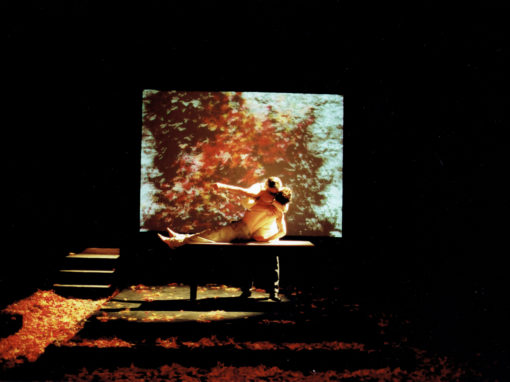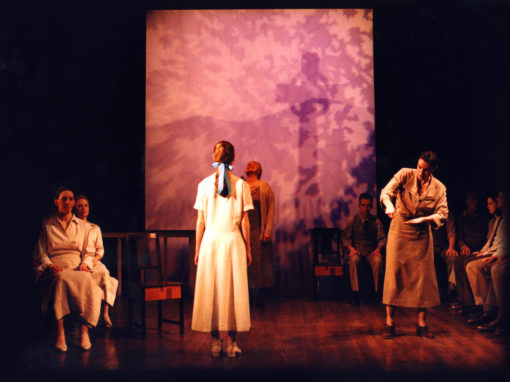Innovation Through Disaster // By Dane Laffrey
Designer Dane Laffrey is determined to (literally) transport the audience.
In reflecting on my work with Transport Group over the past decade, one common thread that feels poignant to consider in this time of great social and spatial isolation are the varied roles we have asked our audience to play. I’ve long been interested in how the adjustment of the spectator experience is a powerful design tool; without an audience there is no theatre at all. My work with Jack has allowed me to experiment time and time again with audience perspective as the key ingredient.
The set design for I Remember Mama was an assembly of 10 antique dining tables, 60 chairs and a sea of family heirlooms inside the Gym at Judson, which was left absent of any theatrical lighting. We wanted the space itself to feel very present and the audiences’ relationship to the piece to feel as informal, simple, and communal as possible—as though they had walked into a Sunday flea market. Seating ringed the space in two rows and the audience deliberately shared the same space and illumination as the performers – audience and ensemble were a single body.
Two seasons later in the same space, Jack and I began to conceive the design for William Inge’s Picnic and Come Back, Little Sheba. The two shows shared common scenic elements: modular raw plywood wall sections and seating risers. For Picnic these elements created a long expanse; the sense of two adjacent houses and of open space and horizon. The audience further accentuated the horizontality, arrayed long on the opposing diagonal.
Come Back, Little Sheba used the same elements to create a very different experience, one in which the audience became the claustrophobic architecture of Doc and Lola’s house. Anchored by the scenery, the audience formed the walls and the doorways. Their unrelenting voyeurism created the heat and tension the play needs to boil over.
Strange Interlude asked a great deal of our audience. Their commitment to active participation in the experience was the only adequate mirror to the Herculean feat of the great David Greenspan performing the entire six-hour, nine-act play by himself.
However, it was our first foray into this kind of work with an audience from which we learned the most. When the audience entered The Duke on 42nd Street for See Rock City & Other Destinations, they found the space empty of everything except a mountain of lawn chairs around a tower of black scaffolding. We intended to create a choose-your-own-adventure for our audience. At our first preview, we expected that they would grab their own chairs and array them around the perimeter of the room in time for the performance to begin. Naturally this was a total disaster. In our desire to create an experience, we had not left our audience feeling as though they were in safe hands, and thus they were understandably not willing participants in the experiment. At subsequent performances, the actors set up the seating for the audience as they happily observed the installation from behind a tape line that was eventually removed to invite them into the space.
May we all feel in safe [enough] hands to gather together in theatres again soon.
About the author:

Explore Our Past Shows

